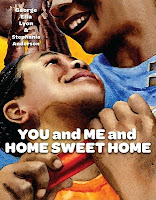Title: "Moses When Harriet Tubman Led Her People to Freedom"
Author: Carole Boston Weatherford
Illustrated by: Kadir Nelson
Reading level: Ages 7 and up
Grades: First-Sixths
Hardcover: 48 pages
Publisher: Hyperion Book CH; First Edition (August 8, 2006)
Language: English
ISBN-10: 9780786851751
This story is about a courageous, compassionate, and deeply religious women, who with her bravery and passionate drive bring her and her people to freedom!
"I set the north star in the Heavens and I mean for you to be free.."
Born into slavery Harriet Tubman hears the voice of God, He tells her to leave her family behind and escape to free land. Taking only her faith she waits until the Lord tells her to go and she runs to the woods through deep pounds, and hides herself in potato holes as if she is buried alive. With her faith slipping the Lord always reminds Harriet that He is with her and will never leave her. Harriet must trust people that could easily turn her in but with her faith and the strong desire to survive she makes it to free land. Harriet Tubman then went on to make nine-teen trips back to the south to help save her people.
"Moses When Harriet Tubman Led Her People to Freedom" is a great book to use to teach children about the Underground Railroad, about slaves, and about Harriet Tubman. The story is about something that really happened back in 1619-1865. It brings you along with Harriet as she is running away from her master. The story makes you believe you are right there with her. Your heart aches for her and the story writing seems to natural as a children book. The author wants to share with the reader about the way in which Harriet was able to with the voice of God head north and find freedom. This story is one that will move you, it is portraying one of the most inspiring women of the Underground Railroad.
There are many different elements through out the story. Three of these elements are allegory, foreshadowing, and assonance.This story is full of allegory its a story that helps us better understand something as powerful as the Underground Railroad and Harriet Tubman. The foreshadowing is also through out the book with the conversation Harriet has with God. They have a back and forth conversation about what she should do next and God always keeps her save and lets her know what will be coming next. The last element is assonance which is the rhyming. The story is a written in a lyrical way so each words run smoothly with the next.
The illustrations in the book are beautiful, they are full of passion, and you feel as if you are right in the story. Kadir Nelson did a great job in using the pictures to follow the text. The text and images go hand in hand. You can feel the stress and pain Harriet Tubman is while she travels to freedom.
"Moses When Harriet Tubman Led Her People to Freedom" is a great book to use to teach children about the Underground Railroad, about slaves, and about Harriet Tubman. The story is about something that really happened back in 1619-1865. It brings you along with Harriet as she is running away from her master. The story makes you believe you are right there with her. Your heart aches for her and the story writing seems to natural as a children book. The author wants to share with the reader about the way in which Harriet was able to with the voice of God head north and find freedom. This story is one that will move you, it is portraying one of the most inspiring women of the Underground Railroad.
There are many different elements through out the story. Three of these elements are allegory, foreshadowing, and assonance.This story is full of allegory its a story that helps us better understand something as powerful as the Underground Railroad and Harriet Tubman. The foreshadowing is also through out the book with the conversation Harriet has with God. They have a back and forth conversation about what she should do next and God always keeps her save and lets her know what will be coming next. The last element is assonance which is the rhyming. The story is a written in a lyrical way so each words run smoothly with the next.
The illustrations in the book are beautiful, they are full of passion, and you feel as if you are right in the story. Kadir Nelson did a great job in using the pictures to follow the text. The text and images go hand in hand. You can feel the stress and pain Harriet Tubman is while she travels to freedom.
I would use this story to teach the importance of the Underground Railroad and who Harriet Tubman is. In the front of the book it gives some information on slavery so I would also want to use that in a lesson as well. The hard part about teaching this book would be that Harriet talks to God and in all public schools that is not allowed so using the story would not work which is sad to me because its such a wonderful and beautiful story.
























